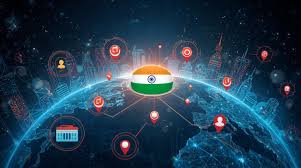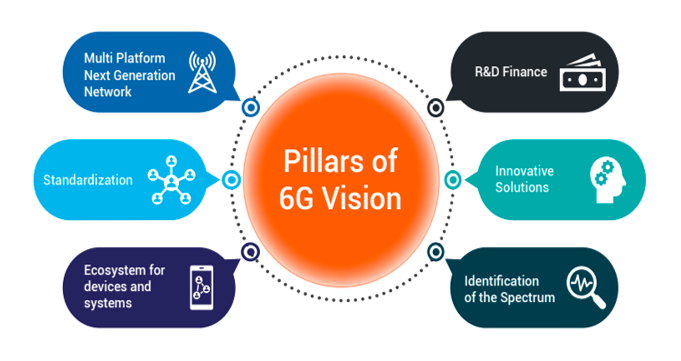Artificial Intelligence and India’s Global Race

- 28 Sep 2025
In News:
Artificial Intelligence (AI) is reshaping the global technological and economic order, influencing sectors from healthcare to defence. For India, AI represents both a transformative development tool and a strategic domain crucial for economic competitiveness and national security.
India’s Position in the Global AI Landscape
India has entered the AI race with significant momentum, backed by a vast digital ecosystem and growing policy support. The government’s India AI Mission, with an outlay of ?10,372 crore, seeks to enhance AI infrastructure, computing power, and research capacity. With over one billion smartphone users and 20 billion monthly UPI transactions, India offers a data-rich environment that can power AI development at scale.
However, compared to the United States ($20 billion) and China ($30 billion) in AI investments during 2024, India’s funding remains modest. While India boasts a talent base of over 18 million software professionals and has integrated AI into school curricula, it still lags in advanced research output and patent generation.
Opportunities for India’s Development
AI holds immense potential to drive India’s socio-economic transformation:
- Healthcare: AI-assisted diagnostics and predictive models can enhance early disease detection, telemedicine outreach, and epidemic forecasting.
- Education: Initiatives like the Bhashini Project enable real-time language translation, improving accessibility and inclusivity in classrooms and governance.
- Agriculture: AI-driven precision farming and weather-based advisories can help small farmers optimise productivity and manage climate risks.
- Finance: Tools such as “Hello UPI” and AI-based fraud detection can deepen rural financial inclusion and strengthen digital security.
- Disaster Management: States like Odisha employ AI in cyclone prediction and geospatial mapping, showcasing AI’s role in saving lives and resources.
Together, these applications align with India’s broader developmental goals of inclusion, sustainability, and resilience.
Challenges in India’s AI Ecosystem
Despite its promise, India faces structural and institutional constraints:
- Infrastructure Deficit: Limited access to high-end GPUs and slow expansion of data centres constrain computational capacity.
- R&D Weakness: India contributes barely 1.4% of global AI research papers and produces less than 2% of global AI PhDs, reflecting a shallow innovation base.
- Regulatory Lag: The outdated IT Act (2000) continues to govern digital activities, lacking provisions for algorithmic transparency, accountability, and data ethics.
- Talent Gap: The focus on short-term certification courses produces surface-level skills rather than deep AI expertise.
- Geopolitical Pressure: The US, EU, and China lead in developing Large Language Models (LLMs), while India risks remaining a consumer market rather than a producer of foundational AI technologies.
Way Forward
A robust AI ecosystem requires a multi-dimensional approach:
- Strengthen Research and Innovation: Enhance public funding for fundamental AI research and incentivise private R&D.
- Human Capital Development: Expand AI training beyond elite institutions and develop teacher capacity for advanced AI pedagogy.
- Regulatory Reforms: Enact a Digital India Act and an AI-specific ethical charter inspired by the EU AI Act, ensuring safety without stifling innovation.
- Public–Private Collaboration: Establish AI innovation hubs focused on healthcare, agriculture, and sustainability.
- Global Partnerships: Engage with international initiatives and leverage India’s leadership in G20 and BRICS to promote responsible AI governance.
Conclusion
India’s AI trajectory stands at a decisive juncture. With its digital depth, demographic advantage, and policy intent, the country can harness AI to drive inclusive growth and global leadership. Yet, without addressing gaps in research, regulation, and ethics, India risks being a user rather than a creator in the AI revolution. Balancing innovation with responsibility will determine whether India can truly emerge as a leading power in the AI-driven century.
Bharat 6G Mission

- 10 Nov 2024
In News:
India aspires to lead the world in 6G technology by 2030 through the Bharat 6G Mission. This initiative builds upon the successful rollout of 5G, which reached 98% of districts in just 21 months.
Key Features of 6G Technology
- Terahertz (THz) Frequencies: 6G will utilize THz waves capable of transmitting significantly more data than 5G, offering ultra-fast data rates.
- Massive MIMO (Multiple Input Multiple Output): Supports a large number of devices and simultaneous connections using multiple antennas, improving data transmission and reception.
- Network Slicing: Creates specialized, smaller networks tailored to specific traffic types, such as video streaming or industrial automation.
- Enhanced Security: Incorporates advanced encryption and authentication protocols to safeguard sensitive data.
- Ultra-Reliable Low Latency Communication (URLLC): Ensures ultra-low latency, critical for applications like industrial automation, virtual reality (VR), and augmented reality (AR).
- Integrated Intelligent Reflecting Surfaces (IIRS): Enhances signal strength and quality, particularly in areas with poor reception.
- High-Speed Data Transfer: Supports data communication over hundreds of GHz or THz frequencies, facilitating faster transfer rates.
Government Initiatives for 6G Development
Bharat 6G Vision and Strategy
- Goal: To design, develop, and deploy 6G technologies, ensuring secure, intelligent, and pervasive global connectivity.
- Core Principles:
- Affordability, sustainability, and ubiquity aligned with the vision of Atmanirbhar Bharat (self-reliant India).
- Strategic Objectives:
- Promote R&D through startups, universities, and industries.
- Develop affordable 6G solutions and global IP contributions.
- Focus on transformative applications to enhance quality of life.
Technology Innovation Group (TIG) on 6G
- Established: November 1, 2021.
- Task Forces:
- Focus on multidisciplinary solutions, spectrum management, devices and networks, international standards, and R&D funding.
Bharat 6G Alliance
- A collaborative effort between Indian industry, academia, and research institutions to develop 5G advancements, 6G products, and patents.
- Global Alignment: Partners with organizations like the Next G Alliance (US), 6G Flagship (Finland), and South Korea’s 6G Forum.
Applications of 6G Technology
Application Area
Description
Healthcare
Real-time patient monitoring and AI-connected devices.
Agriculture
IoT and AI-driven predictive systems for crop health and irrigation.
Defense & Internal Security
Enhanced surveillance, communication, and unmanned operations.
Disaster Response
High-volume communication for emergency coordination.
Transportation
Ultra-low latency for urban air mobility and traffic management.
Education
High-speed remote learning, immersive AR/VR-enabled classrooms.
Metaverse
3D holographic displays and seamless virtual interactions.
Industrial Automation
Smart factories with enhanced operational efficiency through real-time data.
Smart Cities
Efficient urban infrastructure and real-time monitoring using IoT.
Entertainment & Media
Higher-quality streaming, immersive content delivery.
Environmental Monitoring
Real-time data collection for resource management and conservation.
Challenges in 6G Development
- Technical Complexity: Development of advanced components and subsystems makes 6G technology highly complex.
- Infrastructure Deployment: Significant investment and regulatory support are required for the necessary infrastructure upgrades.
- Spectrum Allocation: The limited availability of spectrum poses challenges in balancing competing demands for bandwidth.
- Security Concerns: High-speed data transmission increases vulnerability to cyber threats, necessitating robust security protocols.
- Standardization Issues: Achieving global consensus on standards for 6G interoperability can be slow and contentious.
- Global Collaboration: Effective international cooperation is critical for technological and regulatory alignment.
Conclusion
India’s Bharat 6G Mission represents a visionary approach to maintaining technological leadership in the rapidly evolving global digital landscape. By investing in research, fostering international collaborations, and pursuing policies aligned with Atmanirbhar Bharat, India can harness 6G to fuel socio-economic growth and strengthen global connectivity.
